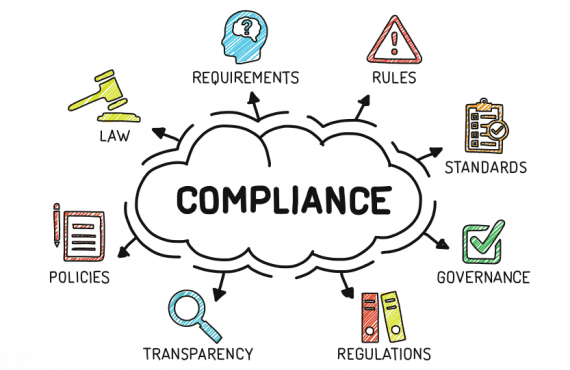Jeannine LeCompte, Publishing and Research Coordinator
A Medicare- and Medicaid-approved long-term care (LTC) facility is under a legal obligation to create and maintain an effective compliance program which can be inspected upon request by the authorities. It is therefore important to have a clear understanding of the core components of a compliance program.
According to Chapter IV of Title 42 of the Code of Federal Regulations, the first core component for a compliance program is for the facility to have written policies and standards of conduct, and the second core component is compliance oversight.
Written policies, procedures, and standards of conduct should:
- Articulate the facility’s commitment to comply with all applicable federal and state standards
- Describe compliance expectations as embodied in the standards of conduct
- Implement the operation of the compliance program
- Provide guidance to employees and others on dealing with suspected, detected, or reported compliance issues
- Identify how to communicate compliance issues to appropriate compliance personnel
- Describe how suspected, detected, or reported compliance issues are investigated and resolved by the facility
- Include a policy of non-intimidation and non-retaliation for good faith participation in the compliance program, including, but not limited to, reporting potential issues, investigating issues, conducting self-evaluations, audits and remedial actions, and reporting to appropriate officials
Standards of conduct, also called codes of conduct, must state the overriding principles and values by which the facility operates. These in turn must underpin all the compliance policies and procedures. The code of conduct must specify that all employees conduct themselves in an ethical manner, that issues of noncompliance are always reported through appropriate mechanisms, and that reported issues will be addressed and corrected. Written attestations that all employees have read and received the code of conduct, either alone or as part of an employee manual, should be included in the appropriate personnel files.
Compliance oversight makes up the next component. The legal requirement for oversight means that the facility must appoint a designated compliance officer and a compliance committee. These in turn must report and be directly accountable to the chief executive and senior management.
The compliance officer is in charge of the day-to-day implementation of the compliance program. This officer and the compliance committee must report directly to the governing body on the activities and status of the compliance program, including issues identified, investigated, and resolved by the compliance program.
Finally, it is a legal requirement of the governing body that it must be knowledgeable about the content and operation of the compliance program, and it must exercise reasonable oversight with respect to the implementation and effectiveness of the compliance program.




































